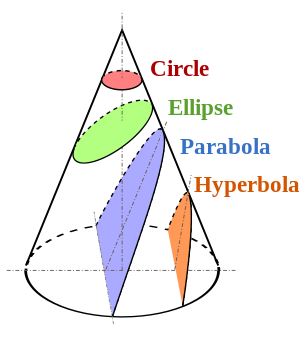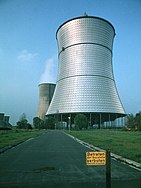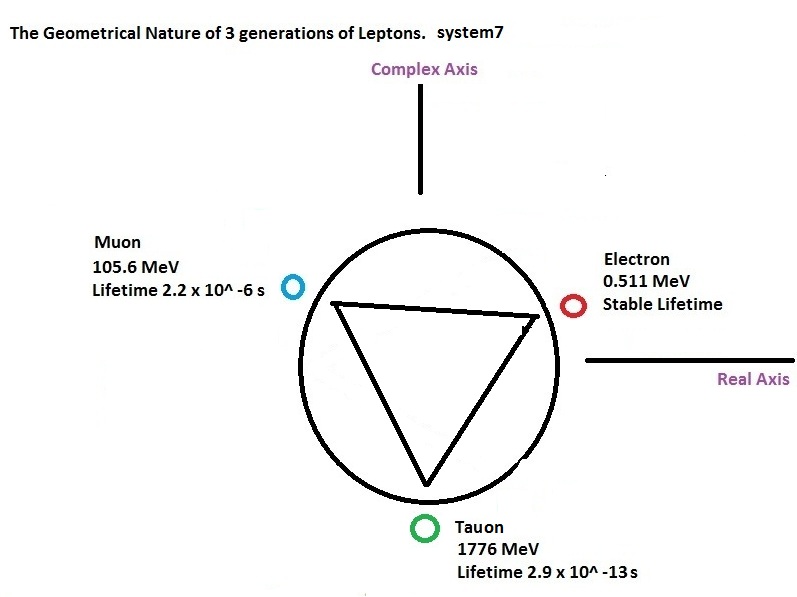But the radius difference appears to be real! 😎R is this mass shell radius thingie
E/c = R which is 0.55 x 10^ -35 m
Doesn't make sense to me! The proton charge radius is conventionally 0.87 x 10^ -15 m. 😕
I found this, dated January 2021: (PDF) The mass radius of the proton
Unfortunately, the relevant figures are only available via license."The mass radius is a fundamental property of the proton that so far has not been determined by experiment.
The extracted mass radius is significantly smaller than the charge radius of the proton.
We attribute this difference to the interplay of asymptopic freedom and spontaneous breaking of chiral symmetry in QCD."
Last edited:
No, the figures are in the abstract:
fm being 10^ -15 m.
There is a bit of stuff on youtube about this mass-shell stuff by Murray Gell-Mann. I think I have got entirely the wrong idea... I'll watch a bit.
the r.m.s. mass radius of the proton ${\rm R_M = 0.55 \pm 0.03 \ fm}$. The extracted mass radius is significantly smaller than the charge radius of the proton ${\rm R_M = 0.8409 \pm 0.0004 \ fm}$.
fm being 10^ -15 m.
There is a bit of stuff on youtube about this mass-shell stuff by Murray Gell-Mann. I think I have got entirely the wrong idea... I'll watch a bit.
1 fermi = 1.0×10^-15 m
I've been researching the background in regard to measuring the proton radius.
Determining the spatial extent of a proton is difficult and can only be done by indirect measurement.
One way is to measure the radius of the proton's oscillating electrostatic field - a radius referred to as the 'charge radius'.
The first technique used to measure the charge radius of the proton was electron scattering - first used in the 1950s and still a powerful tool today.
The stated radius of a proton is based on its charge radius and is in the region of 0.8 fm
So 'charge radius' is easy enough to understand, it's the 'mass radius' that is the puzzle.
I've been researching the background in regard to measuring the proton radius.
Determining the spatial extent of a proton is difficult and can only be done by indirect measurement.
One way is to measure the radius of the proton's oscillating electrostatic field - a radius referred to as the 'charge radius'.
The first technique used to measure the charge radius of the proton was electron scattering - first used in the 1950s and still a powerful tool today.
The stated radius of a proton is based on its charge radius and is in the region of 0.8 fm
So 'charge radius' is easy enough to understand, it's the 'mass radius' that is the puzzle.

Aha, I messed up the calculation entirely... 😱
Off mass-shell: Pythagoras to the LHC, via Einstein and Feynman | Science | The Guardian
I redid a back of a beermat calculation for a proton.
1.67 x 10^ -27 kg
c = 3 x 10^ 8 m/s
5 x 10 ^ -19 m
Well that is better, but still not right, 😕
But we know E = mc², so E² = m²c⁴. Which means that, to make both equations work, -R² must equal m²c²
Off mass-shell: Pythagoras to the LHC, via Einstein and Feynman | Science | The Guardian
I redid a back of a beermat calculation for a proton.
1.67 x 10^ -27 kg
c = 3 x 10^ 8 m/s
5 x 10 ^ -19 m
the r.m.s. mass radius of the proton ${\rm R_M = 0.55 \pm 0.03 \ fm}$. The extracted mass radius is significantly smaller than the charge radius of the proton ${\rm R_M = 0.8409 \pm 0.0004 \ fm}$.
Well that is better, but still not right, 😕
The "mass radius" of a particle and the "radius of the mass-shell" would appear to be quite different things, Steve.
The former is a measure of the physical dimensions of a particle, while the latter is the radius of a weird four-dimensional spacetime "shell" - a surface which is not even a sphere!
As long as a particle remains on that shell its total energy and speed will vary, but its "invariant" mass will remain the same.
Mass in special relativity - Wikipedia
On shell and off shell - Wikipedia
The former is a measure of the physical dimensions of a particle, while the latter is the radius of a weird four-dimensional spacetime "shell" - a surface which is not even a sphere!
As long as a particle remains on that shell its total energy and speed will vary, but its "invariant" mass will remain the same.
Mass in special relativity - Wikipedia
On shell and off shell - Wikipedia
Last edited:
You have got to understand that me and my gifted friends would sit at the back of the Physics Class and laugh at the Professors. 🙂
Take this piece of nonsense for instance:
On shell and off shell - Wikipedia
Hyperboloid? That's an Ellipsoid! 😀

A Child of 10 can see that. 😎
Take this piece of nonsense for instance:
On shell and off shell - Wikipedia
Hyperboloid? That's an Ellipsoid! 😀
A Child of 10 can see that. 😎
A parabola is closed (section of an Ellipse) and a hyperbola is not? This is for example how they worked out that that Oumaouma (sp?) thingy was ‘not of this solar system’ or as Avi would have us believe, an alien spacecraft.
Spacecraft can be made to fly in hyperbolic paths, but that requires course adjustments (ref Motion Mountain and don’t ask me what page 😀 )
Spacecraft can be made to fly in hyperbolic paths, but that requires course adjustments (ref Motion Mountain and don’t ask me what page 😀 )
According to Wiki, "mass shell" is a synonym for "mass hyperboloid", meaning the hyperboloid in energy-momentum space describing the solutions to the mass-energy equivalence formula.Hyperboloid? That's an Ellipsoid! 😀
A Child of 10 can see that. 😎
A hyperboloid is the surface obtained from a hyperboloid of revolution by deforming it by means of directional scalings.

In contrast, an ellipsoid is a surface obtained from a sphere by deforming it by means of directional scalings.
We appear to be dealing with complicated geometries here, Steve.
This topic isn't child's play! 😉
Hyperboloids are interesting in everyday life! 😎
A "one-sheeted hyperboloid" (see below) has practical applications.

Many architectural structures are designed using a one-sheeted hyperboloid.


And even furniture!

Hyperboloid - Wikipedia
A "one-sheeted hyperboloid" (see below) has practical applications.

Many architectural structures are designed using a one-sheeted hyperboloid.


And even furniture!

Hyperboloid - Wikipedia
TNT invites you to spend 35 minutes in the company of Lawrence Krauss and his notebook!
Intriguing to listen to the physics unfold. If only his notebook remained in focus!"There's a few things you need to know about muons, and they're very interesting and amazing."

I patiently sat through Lawrence Krauss's lectures there. There was little that made me disagree.
Cue the 4D Tesseract:


I think the Standard Model is basically sound. See no need for dimensions beyond 4, despite the 10, 11, 27D String Theory ideas. We can add a Z Prime or Z' second generation Boson to keep it working up to the second generation.
I have no idea what goes on in the third generation.
But much interest remains in my mind into such things as the 8D or E8 and 24D Leech Lattice:
From the Octahedron to E8 | Azimuth
Cue the 4D Tesseract:

I think the Standard Model is basically sound. See no need for dimensions beyond 4, despite the 10, 11, 27D String Theory ideas. We can add a Z Prime or Z' second generation Boson to keep it working up to the second generation.
I have no idea what goes on in the third generation.
But much interest remains in my mind into such things as the 8D or E8 and 24D Leech Lattice:
From the Octahedron to E8 | Azimuth
Last edited:
It's about time you were grabbed by the hyperboloids! 😛Cue the 4D Tesseract

I assure you, Galu, I am aware of most things geometrical.

But am more interested in things to do with numbers.
mersenneforum.org
Here's an odd thing. In October (Which means 8 in Latin) 1987 a Horrible Hurricane hit London. We discovered many things that horrible Night and the subsequent next day. Even the Fruit machines in our local drinking hole went bonkers. 😕
Interestingly, I took (E8) 8 cubed multiplied by the three dimensions of the Universe tonight. 1536, right?
Divided by 1728. The taxicub number (1729) - 1.
Answer? 0.888888888888...... 😱
Coincidence? I don't think so! 4/3 Pi r^3 is a significant number to mathematicians. The volume of a sphere. 😎
But am more interested in things to do with numbers.
mersenneforum.org
Here's an odd thing. In October (Which means 8 in Latin) 1987 a Horrible Hurricane hit London. We discovered many things that horrible Night and the subsequent next day. Even the Fruit machines in our local drinking hole went bonkers. 😕
Interestingly, I took (E8) 8 cubed multiplied by the three dimensions of the Universe tonight. 1536, right?
Divided by 1728. The taxicub number (1729) - 1.
Answer? 0.888888888888...... 😱
Coincidence? I don't think so! 4/3 Pi r^3 is a significant number to mathematicians. The volume of a sphere. 😎
Attachments
Your mathematical ramblings are leading me to suspect that the falling tree may have glanced off your head! 😀Interestingly, I took (E8) 8 cubed multiplied by the three dimensions of the Universe tonight. 1536, right?
Divided by 1728. The taxicub number (1729) - 1.
Answer? 0.888888888888...... 😱
Coincidence? I don't think so! 4/3 Pi r^3 is a significant number to mathematicians. The volume of a sphere. 😎
More interestingly, what the devil was going on with those fruit machines?

Attachments
Today marks exactly 60 years since Yuri Gagarin became the first human being to travel to space, on April 12, 1961.

See the Photo Gallery here: Yuri Gagarin | Space

See the Photo Gallery here: Yuri Gagarin | Space
- Status
- Not open for further replies.
- Home
- Member Areas
- The Lounge
- What is the Universe expanding into..





